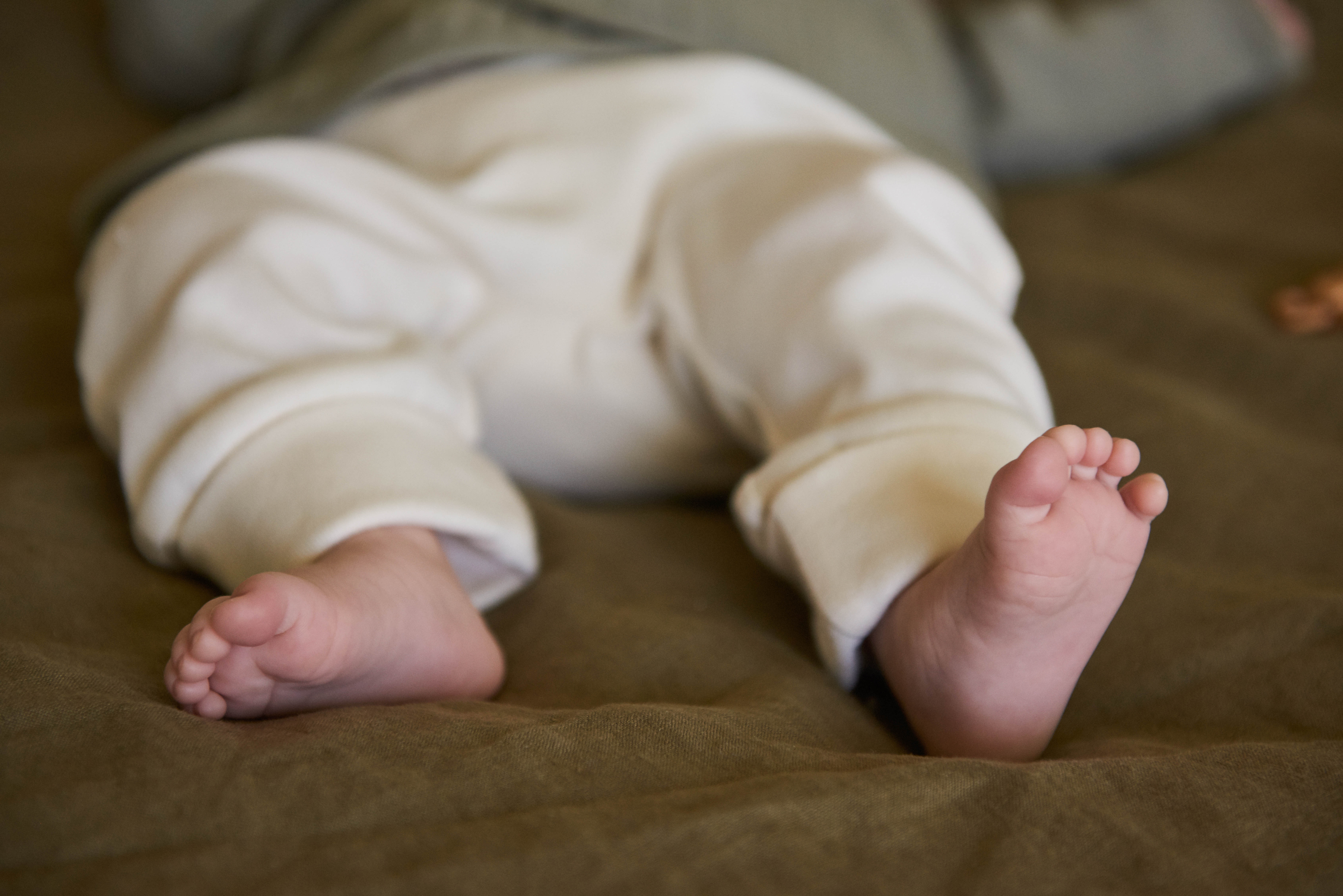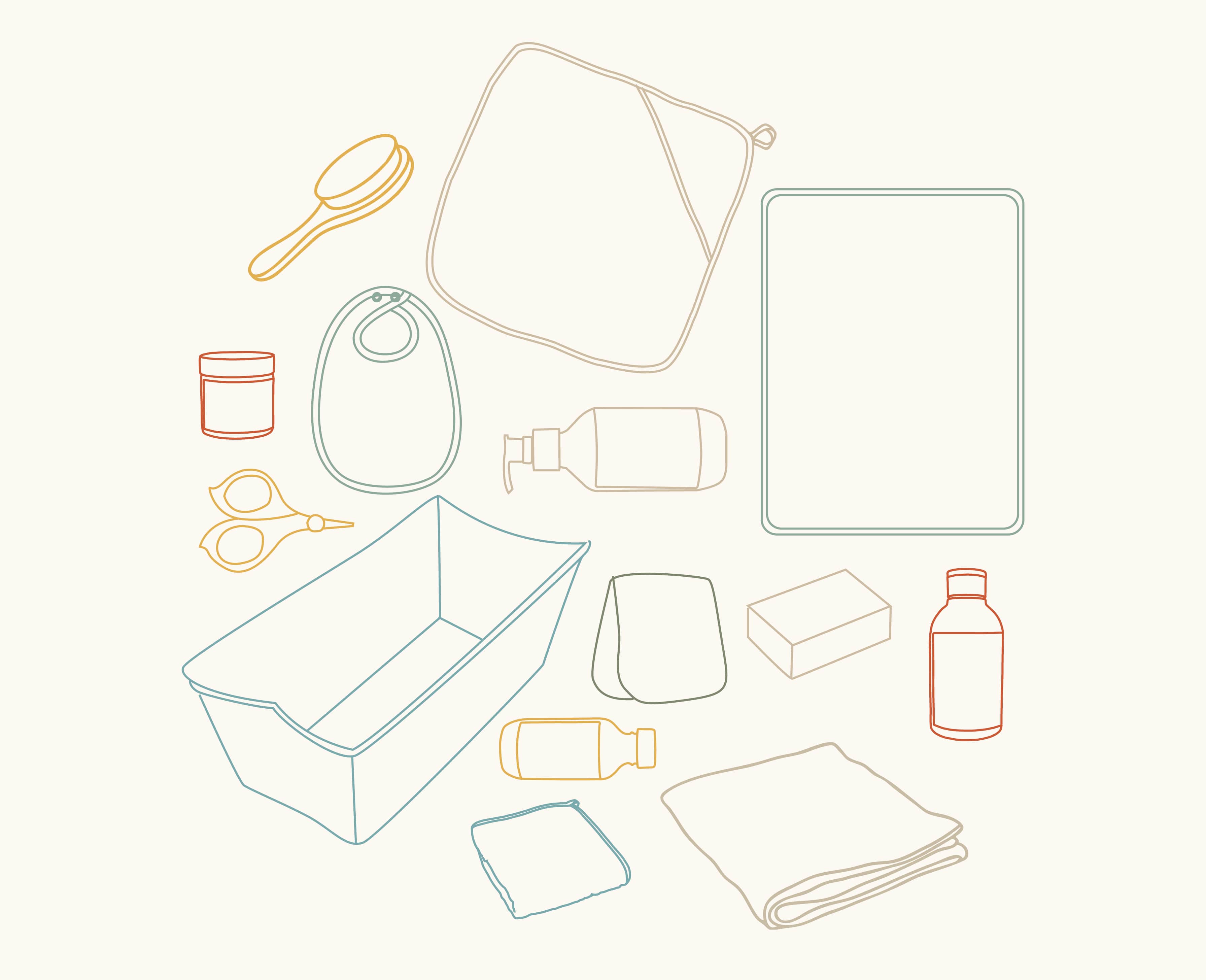
Baby's first bath
A newborn skin is fragile and delicate. Because babies can’t initially regulate their temperature, we wait a good 48 hours (at least) before we bathe them.
In utero, baby is covered in a thick white substance called vernix. Vernix protects the skin from the water baby is living in, thus it is incredibly moisturizing. It is recommended to wait until this is absorbed before baby has their first bath. Never try and scrub this off the skin.
If you stay in a postnatal facility, ask if someone has time to talk you through and show you how to bathe baby. Traditionally when new parents bathe their baby, it tends to be done in the morning when things warm up and two sets of hands are available. After a couple of weeks and once partners go back to work, bath time often gets bought into the evening routine to help baby wind down from the day and get used to the idea of bedtime!
We don’t need to be bathing baby every day as they are not dirty. We don’t want to strip their acid mantle and dry them out too much. Initially, 2-3 times a week is okay. We suggest using a natural oil (not mineral) instead of soap in the bath, i.e., almond oil, coconut oil, or olive oil. A bath can be anything from a clean kitchen sink to a traditional baby bath, you can even shower with pēpi. Wherever you bathe baby, remember to make it comfortable for your back and have space beside you for drying and dressing. Whatever time you decide to bathe baby, I suggest feeding baby before bathing followed by feeding baby again afterward. Especially for an early evening bath, as it may encourage baby to sleep for a few hours after.
You'll Need:
2-3 wash cloths/face cloths
A natural oil (if you are using it)
change pad or several thick towels folded to change and dry baby on.
clean nappy and cloths for after
hooded bath towel to dry baby with
Physical bath and warm water, also boil jug to have extra to add to the bath if the bath cools too much. Some people like to buy a water thermometer. The water needs to be around 37 degrees C. Test by putting an elbow into the bath, if the water feels comfortable, it should be fine, if it feels too hot for you, then it will be too hot for baby’s sensitive skin.
I initially teach parents to bathe a newborn in 2 stages and prefer a flat bath. Remember to remove watches etc., as they can scratch baby's fragile skin. Firstly, fill up ½ of the bath and undress baby down to their nappy (leave this on). Wrap their body in the towel to keep them warm while you wash their face and hair. Next, check the temperature of the bath. Pick baby up, supporting their head with one hand and the other under their bottom. Now decide which arm you will tuck your baby under and rest them securely on your hip. Move the hand on this side up and under to support baby’s head. Your other hand is now free to wash their face/hair.
Hold baby over the bath and use a squeezed-out cloth to gently wipe their eyes first, starting in by their nose and wiping outwards, using a different part of cloth for each eye. Rinse the cloth and then wash the rest of their face, behind their ears, and around neck folds. Next is washing baby's hair. Either with a very wet cloth or with water in your hand, wet baby’s hair and gently wash it with water. Once you are done washing, take baby to the change mat and dry their hair. Unwrap and take baby's nappy off, check water temperature, and adjust it if needed.
Gently pick up baby with one arm under their shoulder blades and grasp around the top of their arm with your thumb and forefinger. Their head will rest on your wrist and pick their bottom up with your other hand. Slowly immerse them in the water, swishing them back and forth until they get used to it. Let their bottom rest on the floor of the bath with their head out of the water. With the other hand, place one of the cloths over their tummy (helps them to keep warm and enjoy it more), then gently wash them with a cloth in your hand. Communicate to them while you are bathing as this eventually can be a really nice time together. It doesn’t have to be rushed if baby is happy. When you take baby out of the bath, they tend to cry, so wrap them in their towel and gently roll them onto their side and begin rubbing their back, this starts the drying process and calms them.
Drying is done by pressing the towel on baby's skin and never rubbing. Particular attention needs to be taken when drying the neck, armpits, and groin area, as these folds of skin, if not dried properly, can grow bugs, and become reddened and sore. So, open these wrinkles out and pat dry gently. Quickly dress baby before they get too cold. You may find that your baby's skin gets very dry and starts to peel in the first couple of weeks. We call this skin shedding as the skin that has been soaking in amniotic fluid while being in utero peels off and reveals a new layer of skin underneath. It’s very normal for a newborn, but you might want to moisturise. You can do this by adding a few drops of natural oil into baby's bath after you have washed their face and hair, e.g., sweet almond oil, coconut oil, avocado oil, or olive oil. Or you may want to massage the natural oil into baby’s skin after their bath when their skin is warm and soft, this can aid baby’s sleep as well.
Watch my quick bathing demo for helpful tips.
- Article by Libby Cain





